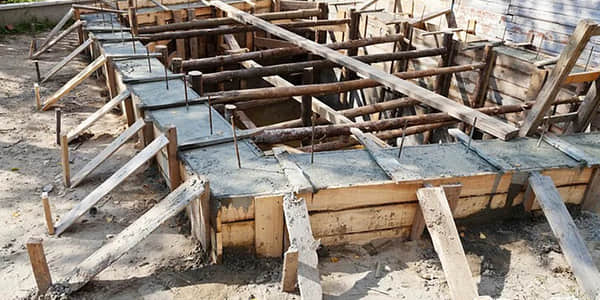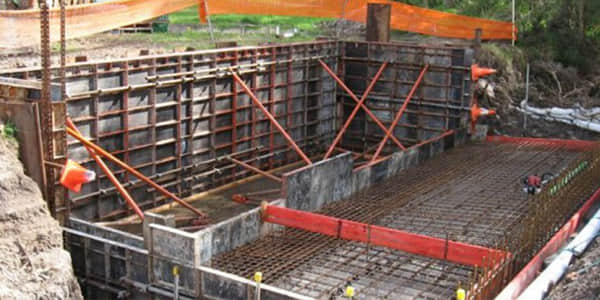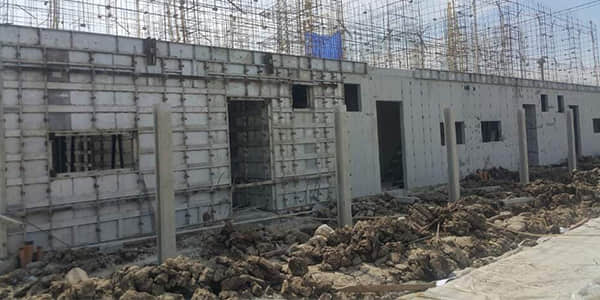Formwork Pricing Per M2 Guide
Formwork Pricing Per m² is one of the most important indicators in building planning. Each new formwork has its distinct attributes related to cost-and-performance that shall avail its project of a set of considerations unique to the same.
This blog will be providing the price range in dollars per m2 for all types of formwork, and material cost, labor cost, transportation, and storage costs will feature highly in assessing the appropriate type of formwork to be adopted for a project. This shall also ensure that for various projects-from residential units to bridges-there shall also offer a guideline for construction purposes and other practical advice with accurate costing facts and professional advice that will drive high performance on your project.
The Main Factors Affecting The Cost Of Formwork
The price of the formwork not only reflects the purchase cost. The cost of material, labor, transport, storage, and the reuse quotient influence the cost in the background. Each of the above factors would thus enable one to assess the total cost more accurately for the various different forms of formwork and choose from those based on project requirements.

Due to the versatility and low initial cost, timber formwork have a predominant use in small and short-term projects. In total, they cost billion rupees, or roughly $50-$100/m² . This cost aspect of wooden formwork is explained in detail:
1. Material cost
- The material cost of wooden formwork is usually $35-$80/m².
2. Labor costs
- Wooden formwork is easy to process and install, and the installation and removal costs are usually $10-$15/m² .
3. Shipping costs
- Wooden formwork is light, easy to transport, and inexpensive. The transportation cost is about $3-$5/m² . Compared with steel formwork and aluminum formwork, wooden formwork has more advantages in terms of economical transportation.
4. Storage costs
- Wood formwork has high requirements for storage conditions, especially in humid environments, and requires additional moisture protection. This increases storage costs by about $2-$3/m². Long-term storage may cause deformation or damage to the wood, so it is suitable for short-term use.
6. Reuse rate
- Wood formwork can usually be reused 4-6 times , making it ideal for small, one-off or low-budget projects. However, in high-frequency projects, its low reuse rate can lead to increased long-term costs.
7. Applicable scenarios
- Small construction projects such as residential and low-rise buildings.
- Disposable structures such as foundations or non-exposed concrete elements.

Steel formwork is a common option for big and high-strength projects because of its high strength, durability, and reusability. Total costs range from $60 to $120 per square meter. This is a detailed analysis of the steel formwork cost:
1. Material cost
- Steel formwork is more expensive due to its sturdiness and smooth surface, usually $40-$84/m².
2. Labor costs
- Steel formwork is heavy and complex to install, usually requiring professional technicians to install and remove, costing $10-$20/m² .
3. Shipping costs
- The weight of the steel formwork is a major factor affecting the shipping cost, which is usually $6-$10/m² . Shipping large quantities or over long distances may further increase the cost. Compared with wooden and plastic formwork, steel formwork is less economical to transport.
4. Storage costs
- Steel formwork needs to be stored in a moisture-proof and rust-proof environment to extend its service life. Storage costs are $4-$6/m². Although durable, steel formwork is prone to rust if stored in poor conditions, which affects its performance.
6. Reuse rate
- Steel formwork can usually be reused more than 50 times , which significantly reduces the average cost of use and increases its economy in long-term projects.
7. Applicable scenarios
- High strength concrete is used in structures like bridges, tunnels, and tall buildings.
- Large long-term projects also have economic advantages owing to their high recycling rate.
Aluminum Formwork Cost Analysis

In the present day, aluminum formwork stands out among modern construction systems. Being lightweight, with a high reuse rate and great construction efficiency, its total cost ranges between $80-$150/m² . Here is the deeper analysis of aluminum formwork costs:
1. Material cost
- The material cost of aluminum formwork is relatively high , usually between $60-$120/m² .
2. Labor costs
- Aluminum formwork is lightweight and only requires a small number of people to complete the construction process. The labor cost is usually $8-$12/m² .
3. Shipping costs
- The weight of aluminum formwork is only about 1/3 of that of steel formwork, so the transportation cost is lower, generally $4-$6/m² . Its lightness and high durability have significant cost advantages in long-distance transportation.
4. Storage costs
- Aluminum formwork has extremely high corrosion resistance and oxidation resistance, and has a low storage cost of only $2-$4/m². Even in humid environments, the performance of aluminum formwork will not significantly decrease, thereby reducing storage management costs.
6. Reuse rate
- Aluminum formwork can usually be reused more than 200 times , which can significantly reduce the average cost of long-term projects and is the first choice for projects pursuing long-term cost-effectiveness .
7. Applicable scenarios
- High-rise buildings and residential projects are popular due to its lightness and efficient installation.
- Large projects, especially construction scenarios that require frequent disassembly and assembly.

Lightweight, durable, highly reusable, and easy to clean plastic formwork is gaining acceptance in modern construction. Each m2costs around $70-$130. Detailed analysis of the cost of plastic formwork goes as follows:
1. Material cost
- Plastic formwork uses high-performance plastic , and the material cost is usually $50-$90/m² .
2. Labor costs
- Plastic formwork is designed as modular assembly, light and easy to install and disassemble, so the labor cost is low, generally $6-$10/m² . Compared with wooden formwork and steel formwork, the construction time is significantly reduced, further reducing labor costs.
3. Shipping costs
- Plastic formwork is lightweight, easy to stack and takes up little space, so the transportation cost is low, usually $3-$5/m² . For long-distance transportation projects, its lightness is a significant advantage.
4. Storage costs
- The weather resistance and corrosion resistance of plastic formwork make its storage cost low, generally $2-$3/m² . Even under open-air storage conditions, its performance will not be significantly reduced, and no special storage management measures are required.
6. Reuse rate
- Plastic formwork can usually be used more than 100 times . Compared with other formwork, its long-term use cost is significantly reduced, especially suitable for long-term or frequent disassembly and assembly construction projects.
7. Applicable scenarios
- Small and medium-sized projects such as residential buildings and industrial buildings.
- Long-term projects, especially those that require frequent template disassembly and assembly.
How To Choose The Right Formwork
In construction, the choice of formwork plays a key role in the quality, efficiency and cost of the project. Different formwork types are suitable for different construction needs. When choosing, you need to consider the following factors:
- Project size and type
- Project Budget
- Reuse requirements
- Construction conditions
- Duration requirements
- Storage and transportation conditions
- Environmental and sustainability considerations
When choosing formwork, you should combine project requirements, budget and construction conditions to maximize efficiency and cost-effectiveness. Small projects can choose wooden formwork or plastic formwork , while large projects are more suitable for steel formwork or aluminum formwork . By optimizing the formwork selection, you can not only effectively reduce the cost of formwork per square meter, but also improve construction efficiency and ensure the long-term economy and sustainability of the project.
FAQ
What is formwork cost?
- Formwork costs are all costs associated with the formwork used to support and shape concrete in a construction project, including materials, labor, transportation, storage and maintenance.
What are the economic advantages of highly reusable formwork?
- Highly reusable formwork (such as aluminum formwork and plastic formwork) can significantly reduce the average cost in long-term projects, while reducing the frequency of replacement and maintenance, improving overall economics.
Related Articles
Need Help Estimating Formwork Labor Cost.----REDDIT
Formwork----WIKIPEDIA



